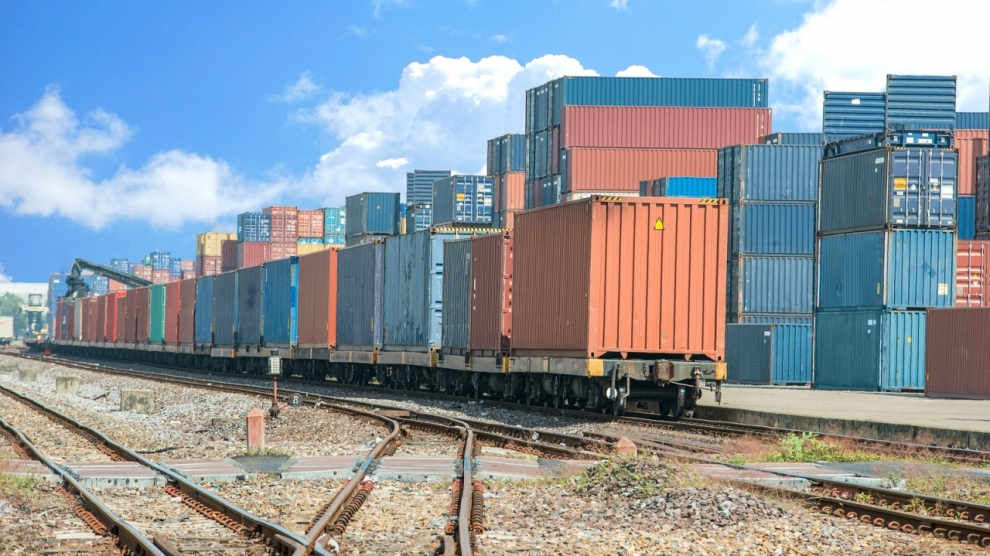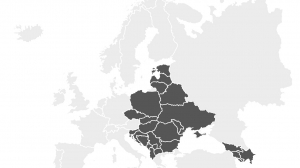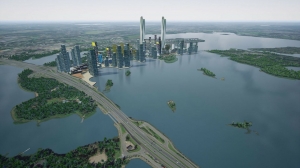Five years after the launch of the Chinese Belt and Road Initiative, it is still not clear whether Central and Eastern Europe will directly benefit from the initiative, or if the region will be consigned to ‘corridor’ status between China and the so-called ‘Blue Banana’ of Central-Western Europe.
“We cannot just be a transit country, we must offer services,” said Radosław Pacewicz, vice president at the Polish Office of Rail Transport during a Poland and CEE: Co-building the Belt and Road conference organised by Poland Today. “Poland has the region’s biggest port, big cities, direct connections with trains. It is not just a place on the map.”
A number of speakers at the conference stressed the need for cooperation.
“This is even more important on a political level. If we, as Europeans, do not find a comprehensive and joint answer on how to deal with this, we will struggle. We should work together in order to generate growth together and to have a balance in terms of size,” said Carsten Hinne, senior vice president corridor development China/New Silk Road at German railway management company DB Cargo AG.
Cooperation is something that should have happened naturally, but it seems many countries are thinking individually.
“Everybody has this ‘wait and see’ mentality. So there are some countries joining the initiative, others which are not. If we do not start with a joint approach we will arrive at the point where only bilateral contracts will exist and we will lose the most important thing we are having as Europeans,” added Mr Hinne.
Looking at other examples and successful investments could help.
“We do see a lot of growth and everybody wants to participate in that growth. From a European business perspective, we know that resources and capital are allocated to places where they are used more efficiently. So, we all need to find a way to be more efficient in order to participate in regional growth,” continued Mr Hinne.
Although the CEE region was neglected for many years, according to China’s ministry of commerce, the total trade volume between China and Central and Eastern European countries reached 28.55 billion US dollars in the first four months of 2019, up 7.9 per cent year on year. The strategic location of the region allows it to potentially play a significant role in overland transport, overcoming possible weaknesses.
“The CEE has a historical disadvantage compared to Western Europe, which in these days could be seen as an advantage: it is more competitive in terms of costs and efficiency, and even without taking into account the Belt and Road initiative, it is a very dynamic location,” added Robert Dobrzycki, CEO of logistics company Panattoni Europe.
“With the Belt and Road Initiative, CEE countries are moving in the right direction. In terms of logistics, for example, the initiative represents a huge potential for us to catch up with Western Europe. The only thing which I am not seeing yet are infrastructure investments,” he continued.
For Wulf Meinel, CEO of logistics management company Fraser Property Europe, cooperation is again the right solution.
“There is no magic recipe but it is up to local players to have a say and then to follow up. More investments into infrastructure could benefit from better cooperation,” he said.
European institutions could play a role in foresting this collaboration but as yet there are no policies in place.
“It is impossible that each country will serve as a business hub for the Belt and Road Initiative,” explained Mr Pacewicz. “We need to find the best solution for each country.”
But finding a product that each country can sell back to China is not easy. The automotive sector seems to be the one that is benefitting the most from external players.
“In this regard, the Belt and Road Initiative should help countries like Poland, Slovakia and the Czech Republic where the automotive industry is more developed, as they are directly benefiting from German investments. But the Belt and Road Initiative is not only Central Europe. This is why we need to have one voice, in order to be able to compete with other players like Western Europe,” concluded Mr Dobrzycki.






Add Comment